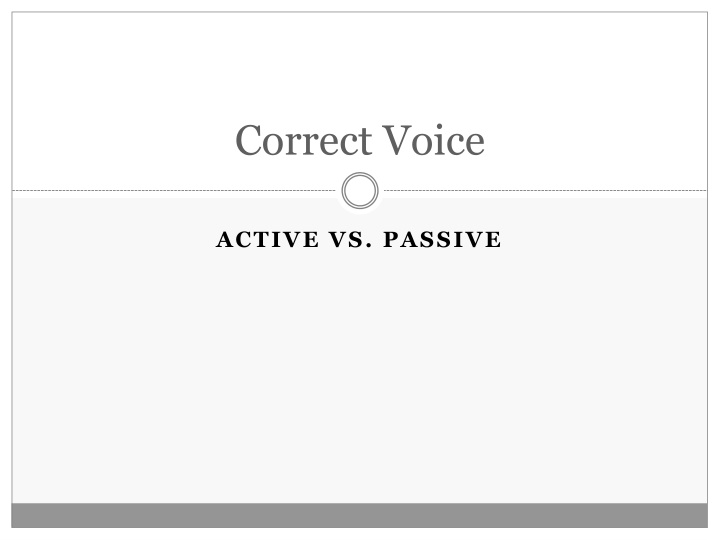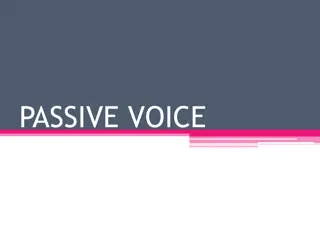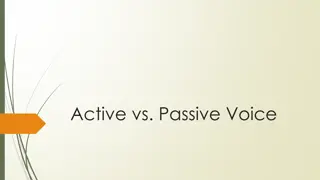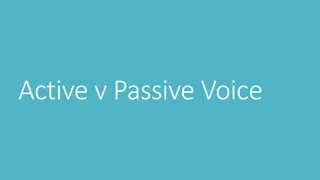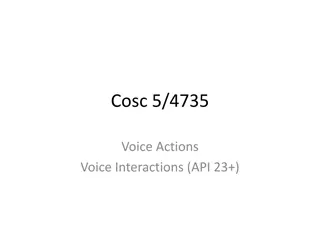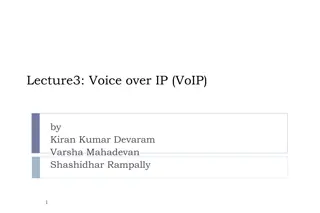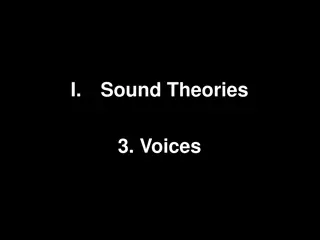Correct Voice
Active voice places the agent before the verb and direct object, making sentences clearer and more engaging. Passive voice, on the other hand, reverses this order and can sound impersonal. Using examples and visual aids, this content explores the differences between active and passive voice, providing insights on when to use each in writing, particularly in APA style.
Download Presentation

Please find below an Image/Link to download the presentation.
The content on the website is provided AS IS for your information and personal use only. It may not be sold, licensed, or shared on other websites without obtaining consent from the author.If you encounter any issues during the download, it is possible that the publisher has removed the file from their server.
You are allowed to download the files provided on this website for personal or commercial use, subject to the condition that they are used lawfully. All files are the property of their respective owners.
The content on the website is provided AS IS for your information and personal use only. It may not be sold, licensed, or shared on other websites without obtaining consent from the author.
E N D
Presentation Transcript
Correct Voice ACTIVE VS. PASSIVE
Active vs. Passive Passive Voice Active Voice The agent is stated before the verb and direct object. Use active voice in APA writing. Example: The woman read the book. The direct object (the thing the agent does something to) is stated as the subject of the sentence. The verb is stated before the agent. Discouraged in APA writing. Example: The book was read by the woman.
Examples Active: The students wrote the papers. Passive: The papers were written by the students. Active: The weather man predicted rain. Passive: Rain was predicted by the weather man. Active: The researcher rejected the null hypothesis. Passive: The null hypothesis was rejected by the researcher.
Cookie Example Active: Someone stole a cookie from the cookie jar. Passive: A cookie was stolen from the cookie jar (by someone).
